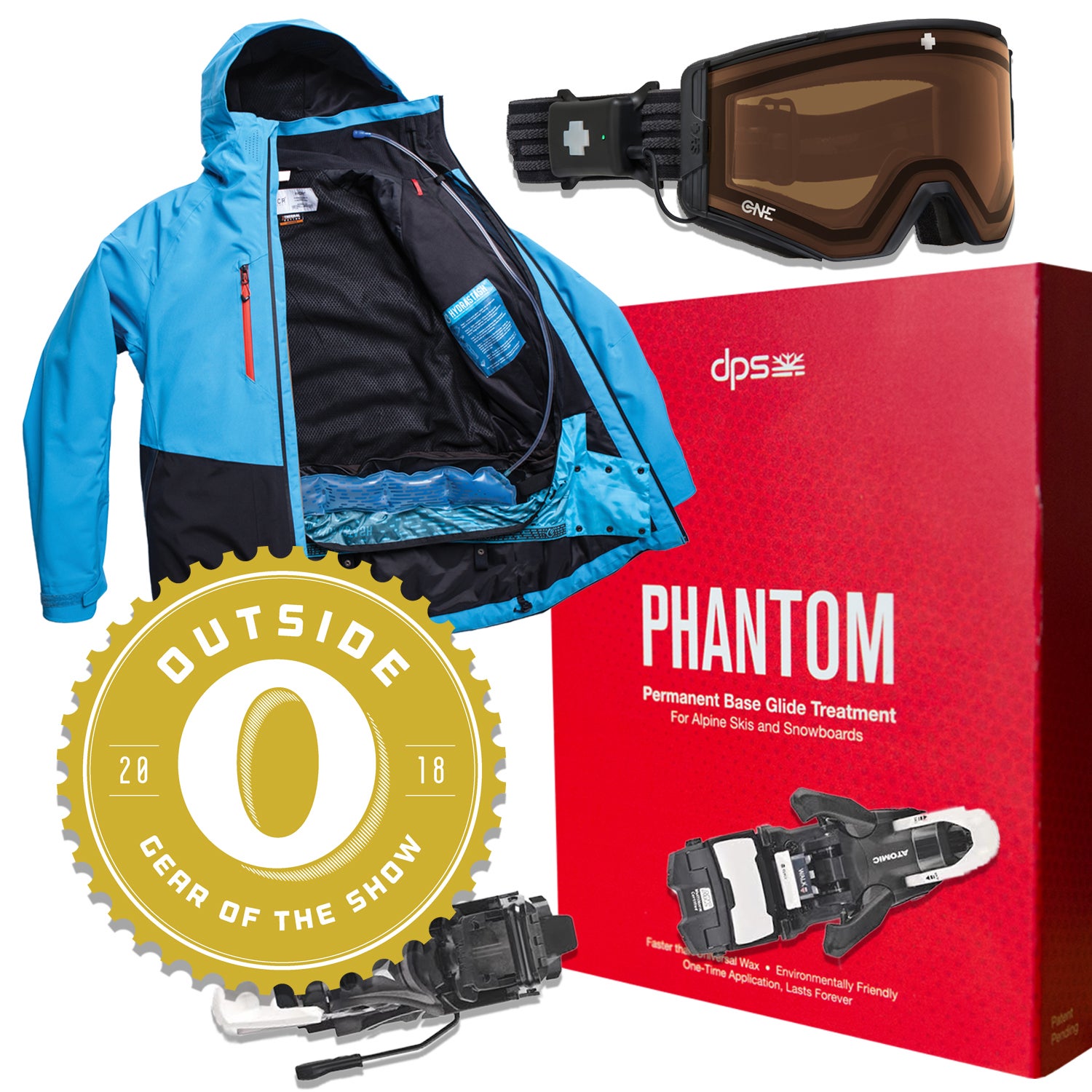It’s not often that deciding what should win Gear of the Show is so clear-cut. But this winter, at the first combined Outdoor Retailer and SIA Snow Show, these pieces of gear—from a goggle with a lens that changes tint at the push of a button to a ski wax you might never have to reapply—stood above the rest.
Salomon/Atomic Shift MNC 13 Binding ($650)
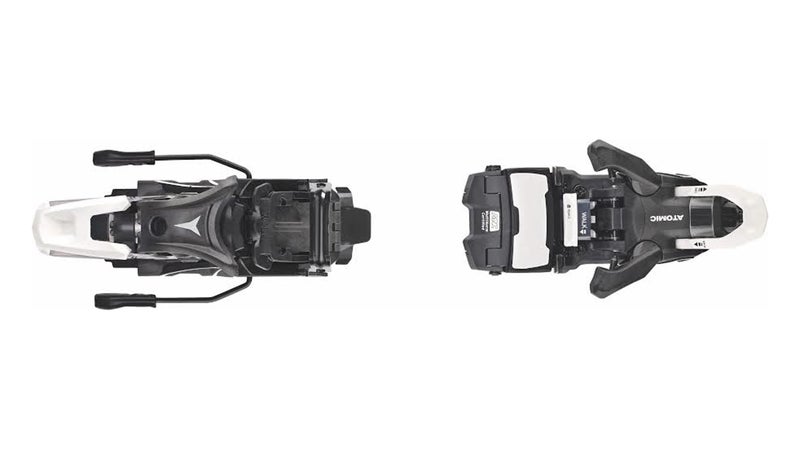
Over the past few years, we’ve presented multiple bindings with coveted Gear of the Show awards. Last year, it was the Fritschi Tecton, and two years before that it was the Marker Kingpin. But it’s safe to say there hasn’t been a binding that has impressed us as much as the Shift MNC 13.
Jointly developed by Salomon and Atomic, the Shift is both light and burly. That’s a huge improvement for backcountry skiers. In the past, when touring, skiers had to choose either a frame binding—which mimics a traditional alpine binding with a full toe and heel—or a more minimalist pin binding, which is light and efficient on the ups but potentially sketchy on the downs.
The Shift is what you’d get if a frame binding and a pin binding had a kid. In touring mode, it uses pins in the toe for efficiency. To transition to downhill mode, just flip a blue lever in the middle of the toe piece to fold the pins out of the way, and then the front unit clamps to the boot like a normal alpine binding. In back, the Shift has an alpine-style heel. We’ve been testing a pair for more than a month, racing down icy groomers without hesitation and not having our legs burn out while slogging uphill.
Aluminum and a proprietary carbon-reinforced plastic construction keep it from getting too heavy—each Shift weighs only 865 grams, with an impressive DIN range of 6 to 13.
Available in September.
—Ben Fox, associate reviews editor
Spy Ace EC Goggles ($275)
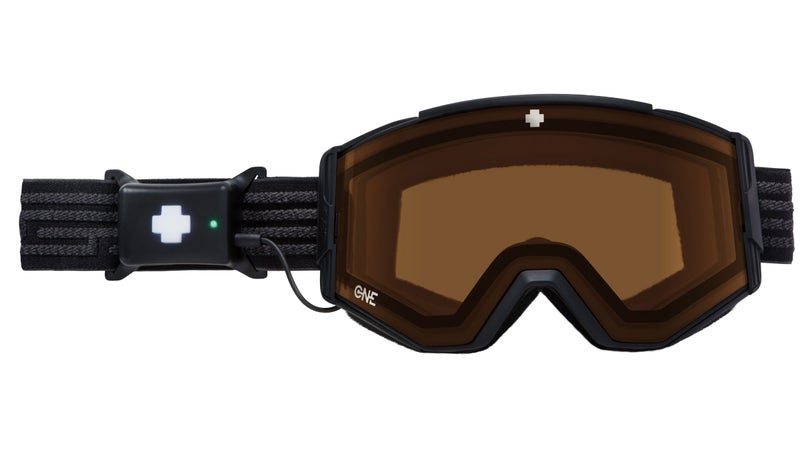
Photochromatic goggles, which automatically adjust the lens tint based on light levels, have been around for years. But they’ve always been flawed. It often takes them up to 30 seconds to fully transition, and the color range is small, going from, say, gray to dark gray. Goggles with swappable lenses have wider ranges, of course, but storing extra lenses is a pain.
The Ace EC fixes these problems. It features dual electrochromic lenses controlled by a lightweight battery back attached to the goggle strap. One press of a button on the battery sends an electronic pulse through an invisible filament sandwiched between the lenses to instantly change the tint. The color switches between clear, medium, and dark in just four seconds. This means if you’re transitioning between sunny slopes and dark glades, you can change your goggle tint on the fly. They’re also superb for days that end in night skiing.
Spy claims the battery lasts long enough for 150 lens changes. We haven’t used ours nearly that much, but after two weekends of skiing and many lens changes, ours has yet to die.
Our only complaint: The large-framed goggles were a bit uncomfortable on our smaller-faced testers.
Available in September.
—B.��.
686 Reservoir Jacket ($350)
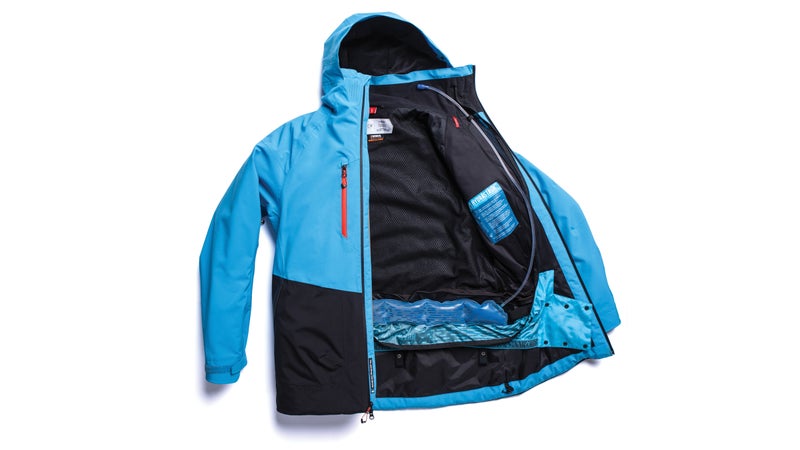
We’ve found that, in a lot of cases, the developments that get us most excited don’t need to involve some flashy new technology. Instead, they enhance convenience, allowing us to focus on our time skiing or hiking rather than futzing with gear. That’s why we’re giving 686’s Reservoir Jacket a Gear of the Show award.
Going on sale this fall, this jacket has a clever way of keeping skiers hydrated on the slopes: 686 built a water bladder into the powder skirt, with a tube that runs up the inside of the jacket, near the zipper, ending with a bite valve right at your chin. That leaves you free to not carry a backpack with a bottle in it (or stop for breaks at the water fountain) if you’re skiing in-bounds. In the backcountry, it means having water handy in a pack. When we put the jacket on and fastened the powder skirt, it felt snug and secure, sitting close to our center of gravity. If the bladder is too tight, you can loosen it with a strap. And it was easy to turn our head and take a sip from the bite valve. It’s not quite hands-free, but it’s close.
The jacket itself, being part of 686’s technical GLCR line, is perfectly spec’ed for deep-snow conditions. DWR-treated face fabric and a waterproof membrane keep the elements out, while the 80-gram poly-fill synthetic insulation keeps heat in. The articulated fit is comfortable in a tuck, and there’s even a dedicated pocket for your lip balm.
The company is calling its system Hydrastash and plans to install it in other jackets within a few years.
Available in September.
—Will Egensteiner, senior gear editor
DPS Phantom ($100)
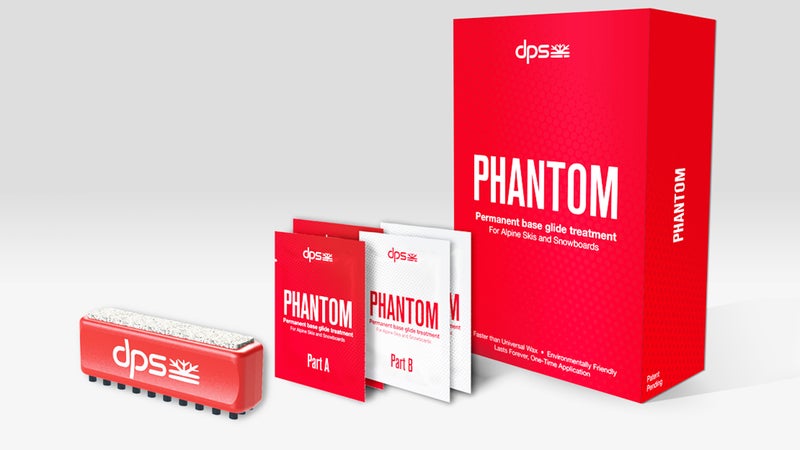
If DPS’s Phantom lives up to its potential, it could mean never having to wax your skis again.
According to DPS, a single application—followed by a six-hour dry time—allows the polymer to completely soak into the base, keeping it lubed for the entire life of the ski. There are the obvious time and money savings of not having to wax your skis a few times a season, but the performance benefits excite us the most. Typically, you’ll want a different wax depending on the temperature of the snow, if you want to get all core about it. DPS claims Phantom works equally well on all types of snow. (Our short time testing it seemed to back this up, but look for a long-term test from us within the next couple months.) This, coupled with the fact that glue-on skins won’t remove Phantom—it’s bonded to the ski’s base—like it will with traditional wax, could make DPS’s creation perfect for backcountry missions where you’re skiing ice in the morning and corn in the afternoon.
Bold claims, especially about never having to wax your skis again, and we’ll have to use the technology for at least one full season before we get behind it.
—Joe Jackson, Gear Guy


